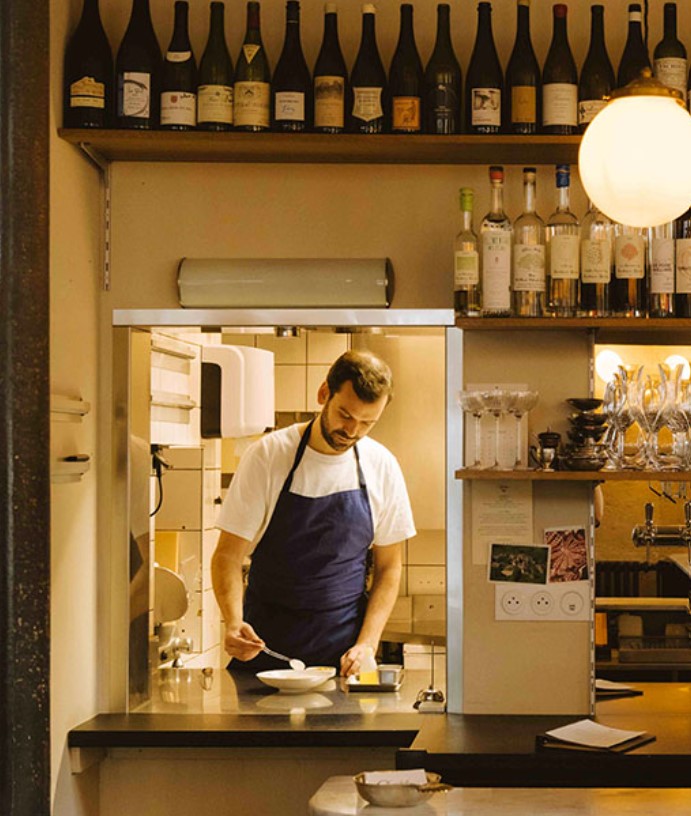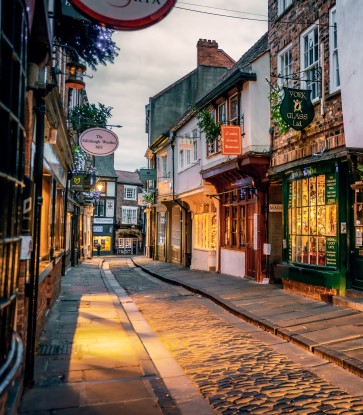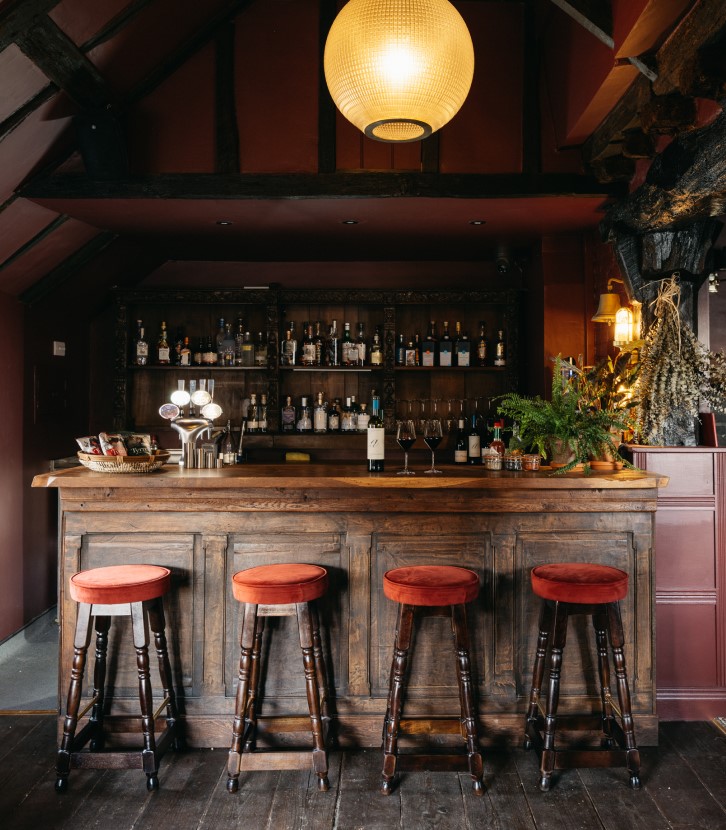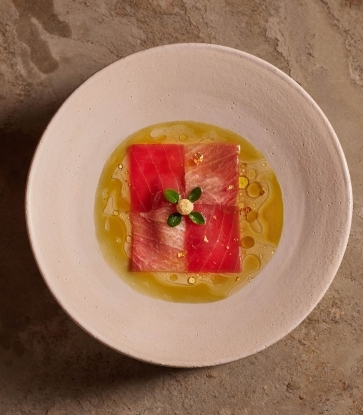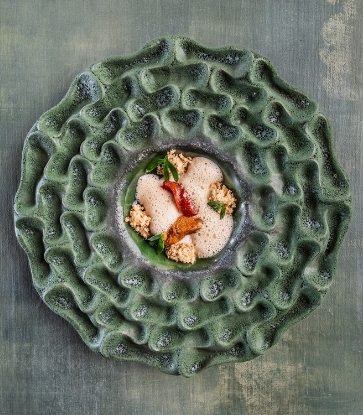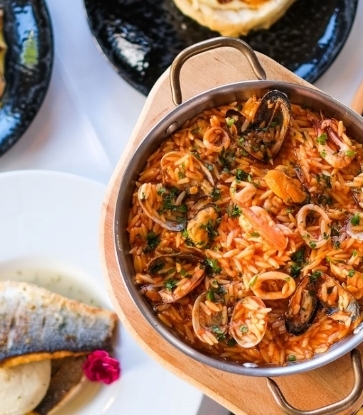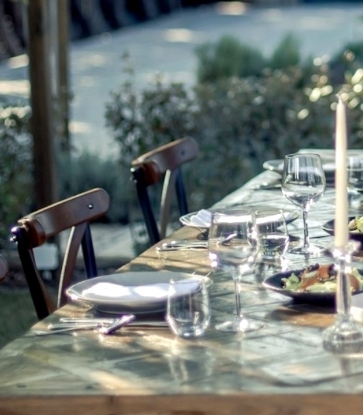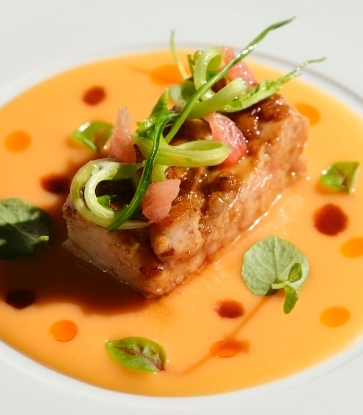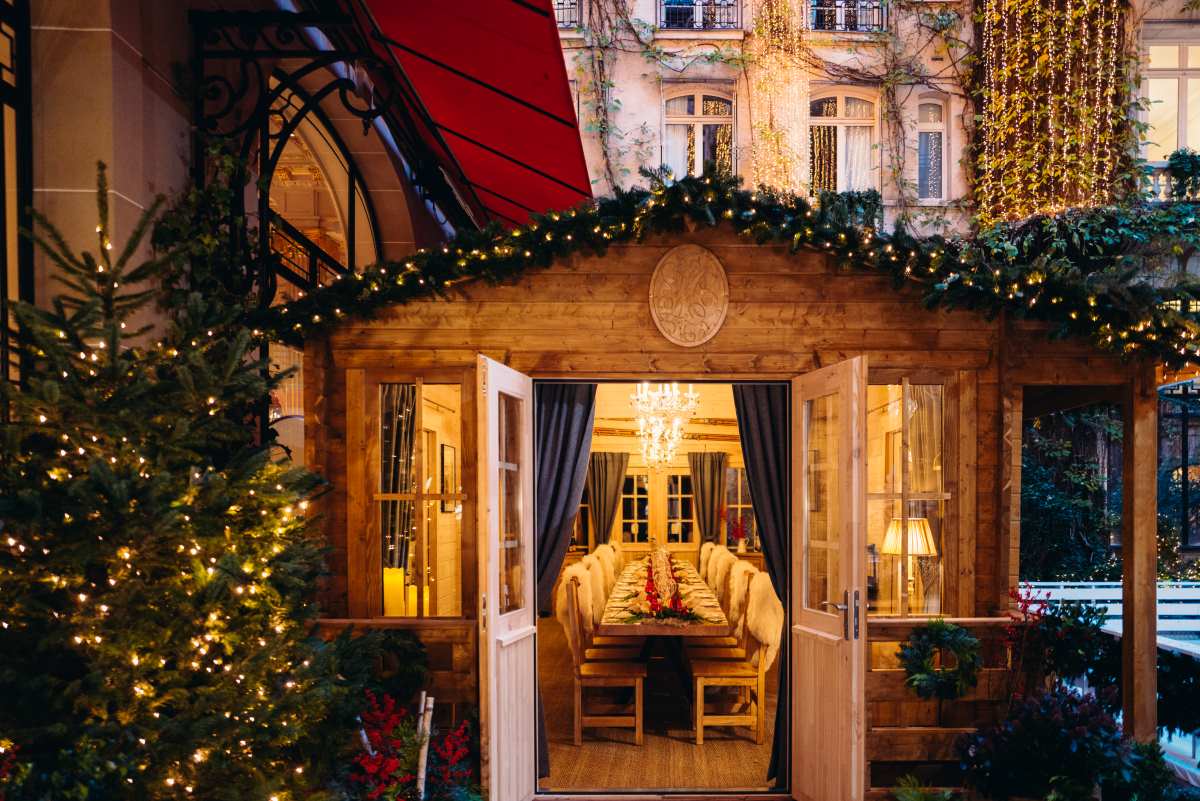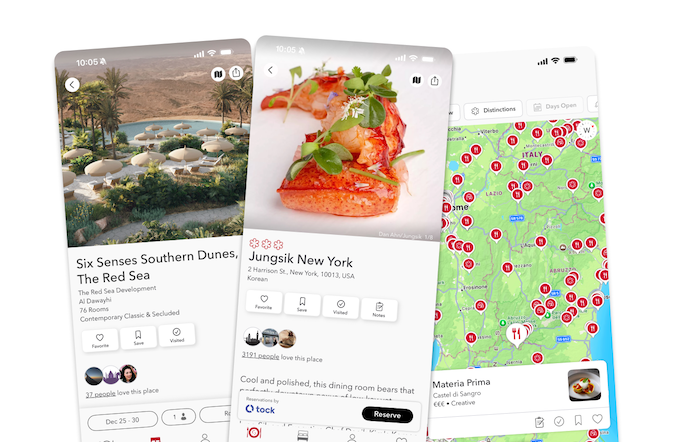While it is true that the historic center is packed with visitors most of the year, veering off the well-trodden track allows another side of the city to emerge. Ask the locals and they’ll tell you that Florence isn’t a city to rush through: Immerse yourself, stay awhile, and savor it bite by bite. To get you started, here’s a curated guide to the city's neighborhoods — with some of our Inspectors' favorite picks for where to eat in Florence along the way.
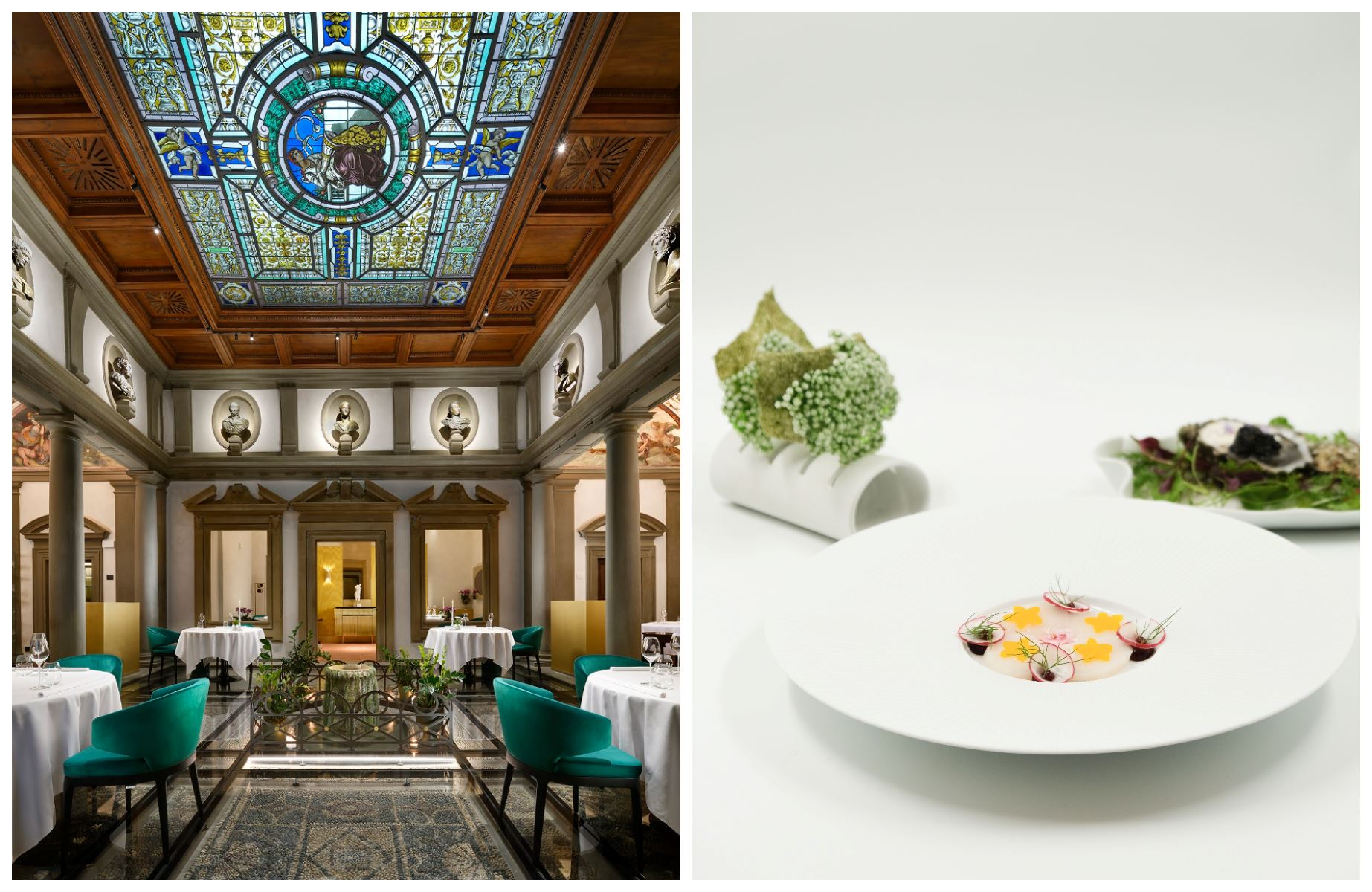
The Heartbeat of Florentine Heritage: Piazza del Duomo, Piazza della Signoria, Piazza della Repubblica and San Lorenzo
The star of the show here is the breathtaking green, white and pink marble of the Santa Maria del Fiore Cathedral — the Duomo, as it’s commonly known — with plenty of tourists gazing up in excitement. This busy, central neighborhood boasts some of the city’s top artistic and architectural splendor, with masterpieces tucked behind unassuming facades and centuries of history layered between shops and gilded chapels. Also hidden within the chaos are great restaurants like the One-Star Atto di Vito Mollica, where the dining room was frescoed by Alessandro Allori, a leading figure in 16th-century Florence. His depictions of episodes from Homer’s Odyssey mingle nicely with contemporary artworks.
The area’s streets are usually packed with tourists, but venture into its hidden alleyways to get a sense of the city’s quieter charm. For an unforgettable first taste of Florence, a 10-minute walk to the north will bring you to the historic Mercato Centrale in San Lorenzo, where locals and visitors rub shoulders over espresso shots, butchers’ counters and steaming plates of pasta. Here the air is rich with the scents of fresh produce, local cheeses (such as the famed pecorino sheep cheese) and sizzling lampredotto, the city’s iconic tripe sandwich.
On your way to Piazza della Signoria, you’ll pass through Piazza della Repubblica, home to a vintage carousel, before reaching the heart of Florence’s political and artistic heritage: the grand Palazzo Vecchio, a fortress-like palace known for its soaring tower, grand frescoed chambers and centuries of political intrigue.
Adjacent are the open-air sculptures of Loggia dei Lanzi, where visitors can admire dramatic masterpieces like Perseus With the Head of Medusa by Cellini and The Abduction of a Sabine Woman by Giambologna, all set against the backdrop of the city’s civic heart.

Close by, Ora d’Aria restaurant is where Chef Marco Stabile reimagines traditional Tuscan cuisine through a refined, contemporary lens with two tasting menus, meat or fish. Offering a minimalist, unfussy experience, the restaurant emphasizes intimacy and thoughtful hospitality. Its elegant setting — complete with an open kitchen and curated library — invites guests to engage with both the culinary and cultural essence of Florence.
For an equally elevated dining experience nearby, Gucci Osteria da Massimo Bottura crafts a MICHELIN-Starred Grand Tour tasting menu rustled up by chefs Karime López and Takahiko Kondo. It’s a bold sensory journey that blends global flavors with Italian finesse. You will be sold once you’ve taken a bite of López’s signature purple corn tostada, a ceviche-inspired crowd favorite with Adriatic bonito, citrus and spice. We also suggest adding on Massimo Bottura’s signature dish — tortellini with Parmigiano Reggiano matured for 36 months — to fully feel like you’ve reached culinary heaven.

Santa Maria Novella: Renaissance Facades, Ricotta Flan and a Pharmacy from 1221
While it’s often associated with the area’s rail station, Santa Maria Novella offers so much more. Dominated by the Basilica di Santa Maria Novella, a masterpiece of Renaissance architecture, the area is also known for its impressive monastic complex and one of the world’s oldest pharmacies — now a gift shop — dating back to the 13th century.
There’s also a varied selection of hotels, from classic to more hipster, and lively trattorias like Il Latini, where you’ll find prosciutto hanging from the ceiling and enjoy hearty, homestyle dishes like ribollita bread soup, Florentine steak and wild boar pasta. Below a radiant 19th-century stained-glass ceiling and a dazzling Murano glass chandelier, the Winter Garden at The St. Regis Florence sits as an opulent yet intimate sanctuary, where velvet furnishings, ambient lighting and live piano music set the stage for a refined culinary journey through Tuscan tradition with contemporary flair.
The neighborhood also has many galleries, bookshops and museums to explore, with the HZERO miniature train museum being a fun stop for little ones.
Sant’Ambrogio: Frescoes, Flan and Butcher-Top Tartare
Just beyond the historic center, the area of Sant’Ambrogio is one of the last places to retain its local charm and exist as a bastion where both tourists and locals actually want to hang out. The neighborhood is home to the Basilica di Sant’Ambrogio (dating back to 998 but rebuilt in the 13th century) and the must-visit Chapel of the Miracle of the Sacrament, where an ancient eucharistic miracle is preserved.
Visitors also come for the frescoes by Cosimo Rosselli, who is known primarily for his role in the decoration of the Sistine Chapel in the Vatican, and the painted terracotta tabernacle by Giovanni della Robbia, a noteworthy figure in Renaissance art for his mastery and innovation in glazed terracotta sculpture, a signature medium of the della Robbia family workshop in Florence.

At the neighborhood’s core lies the Mercato di Sant’Ambrogio, a daily market that’s a local favorite for seasonal produce (with recipe suggestions from those working the stands), artisanal cheeses and quality meats. Menoni, a butcher shop that has been operating since 1921, has a secret terrace above its stall where you can dive into fresh beef tartare, meatballs and other local specialties in a relative oasis from the chaos of the market below.
Adjacent to the market, the Piazza Sant’Ambrogio is a place where people get together at cafés and eateries like Cibreo, loved for its traditional dishes like the signature potato and ricotta flan or flavorful fish soup from the Tuscan archipelago. For a cultivated dining experience, the friendly and colorful Nugolo, a MICHELIN-recognized restaurant, stands out with its garden-style interiors, organic ingredients and locally sourced produce.
Nearby Piazza dei Ciompi, named after the wool workers who led a famous revolt in 1378, remains an intriguing blend of personalities with its well-preserved Loggia del Pesce, where people often hang out, as well as its antique and artisan shops that flank the square, its mosque and its frequent bustling weekend markets.
Oltrarno: Artisan Workshops, Vintage Finds and Tuscan Tastemaker
Its history of craftsmanship is evident in the tiny botteghe, artists’ workshops, that can still be found on many of the neighborhood’s alleyways. Today this is an area of Florence that delivers true experiences, from high-end restaurants to laid-back spots for a drink late into the night.
Crossing the iconic Ponte Vecchio, you’ll find yourself “Oltrarno” or “beyond the Arno” on the other side of the river, a lively bohemian neighborhood. Its bustling streets are packed with artisan workshops, vintage stores and intimate boutiques that showcase the city’s rich dedication to making things by hand — think everything from metalsmithing to leatherwork to etching to fine art to antique restoration.
This side of the Arno draws visitors with its easygoing charm and lively squares like Santo Spirito filled with people getting coffee or lunch against the backdrop of Brunelleschi’s facade. Nearby are cultural treasures such as the Medici royal palace, Palazzo Pitti and the Boboli Gardens — the quintessential Italian Renaissance garden, complete with elegant fountains, hidden grottoes and timeless statues.


San Frediano: Craft Cocktails and Classic Tuscan Flavors
San Frediano is a neighborhood known for its artisans and working class roots, but it has since transformed into a lively hub of trendy bars, cool restaurants and family-run botteghe. The area is home to the historic church of San Frediano in Cestello, an exquisite example of Baroque architecture located near the Arno River, offering picturesque views and a peaceful escape from busier parts of the city.
Piazza Tasso serves as the heart of local life, where children play soccer in the park while locals fill up on gelato at the renowned Sorbettiera or shop at the artisanal food market on Friday afternoons.
For dining enthusiasts, San Frediano boasts several MICHELIN-recognized spots. Seafood lovers will delight in the elegance of Cestello Firenze, a local institution for well-heeled Florentines craving raw fish, overlooking the church of San Frediano in Cestello. Meanwhile, Gunè stands out for its haute cuisine that blends Basilicata and Tuscan flavors, and don’t miss its fun cocktail bar, Next Door.
Another great option is Io Osteria Personale: Its minimalist design and intimate atmosphere provide the perfect backdrop for an exciting menu crafted from seasonal ingredients sourced from small producers.
San Niccolò: Sunset Views, Street Art and Pasta with a View
At the foot of Piazzale Michelangelo, San Niccolò is a charming, history-rich neighborhood where narrow, winding streets and medieval towers set the scene for some of Florence’s most breathtaking views — especially at sunset. There is much to enjoy here, from Clet’s street art-inspired studio to the exquisite museum-worthy jewelry of artisan Alessandro Dari.

A visit to Villa Bardini, with its stunning gardens and ever-changing art exhibitions, makes the perfect prelude to a meal at La Leggenda dei Frati, where Chef Filippo Saporito’s innovative Italian cuisine pairs beautifully with panoramic city views.

Santa Croce: Basilicas, Bistecca and Beyond
Dominated by the Basilica di Santa Croce, the neighborhood is also known for its historic leather school located behind the Basilica. Piazza Santa Croce is surrounded by lots of eateries and one that has been pleasing visitors for decades is the iconic Ristorante del Fagioli.
This historic trattoria is renowned for its authentic Tuscan cuisine, including specialties like ribollita, a winter comfort soup made from vegetable leftovers, beans and stale bread; pappa al pomodoro, a traditional soup containing tomatoes, garlic, bread and basil; and the famed bistecca alla fiorentina made with Chianina beef from the best-known Italian breed of cow, which originated in Tuscany’s Chiana Valley.
This iconic steak is a thick-cut T-bone with a vivid red hue, and the best way to cook it is simply and traditionally: grilled over wood embers or charcoal with no marinade, letting the meat’s natural flavor shine.
In Santa Croce you can also find delicious schiacciata sandwiches filled with local ingredients, or dine at establishments like the Three-Star Enoteca Pinchiorri. It’s renowned for its sophisticated ambience, inventive French-influenced Tuscan cuisine and an exceptional wine collection curated by sommelier Giorgio Pinchiorri, whose wine list has become famous around the globe.
Beccaria: From Medieval Gates to Modern Plates
Centered around Piazza Beccaria, this eastern neighborhood leads to the less-explored parts of Florence. It is home to the medieval Porta alla Croce, one of the few former city gates remaining, and a poignant reminder of Florence’s past: It was once the site of public executions. The square, named after the Enlightenment thinker Cesare Beccaria, who championed the abolition of the death penalty, features fine villas designed during the city’s urban transformation in the 19th century. The area is also known for its shopping scene on Via Gioberti.
San Marco and Piazza della Libertà: From Fra Angelico to Flower-Filled Cafés
Situated just north of the Duomo, the beating heart of this neighborhood is Piazza San Marco, planted with greenery surrounded by benches where students and travelers come to hang out and mingle. In terms of notable landmarks, there’s the San Marco Museum, home to works by Fra Angelico, the 15th-century Florentine painter and Dominican friar known for his serene, luminous frescoes that blended spiritual devotion with early Renaissance artistry.
You’ll also find the Palazzo Medici Riccardi, where you can admire the breathtaking Magi Chapel frescoes by Benozzo Gozzoli, another Renaissance painter known for frescoes of festive, vibrant processions. It’s a must-visit for those seeking a deep connection with Florence's Renaissance heritage.
A short stroll away is Piazza della Libertà, best known for its Triumphal Arch and Porta San Gallo, a city gate dating back to 1285. The piazza’s neoclassical and Renaissance buildings create a striking contrast with the surrounding modern streets and new tram stop. It also serves as a prime spot for breakfast at one of the many charming cafés — like flower-filled Caffe Lietta, under the loggia in the square — or a cheeky aperitivo come sundown.
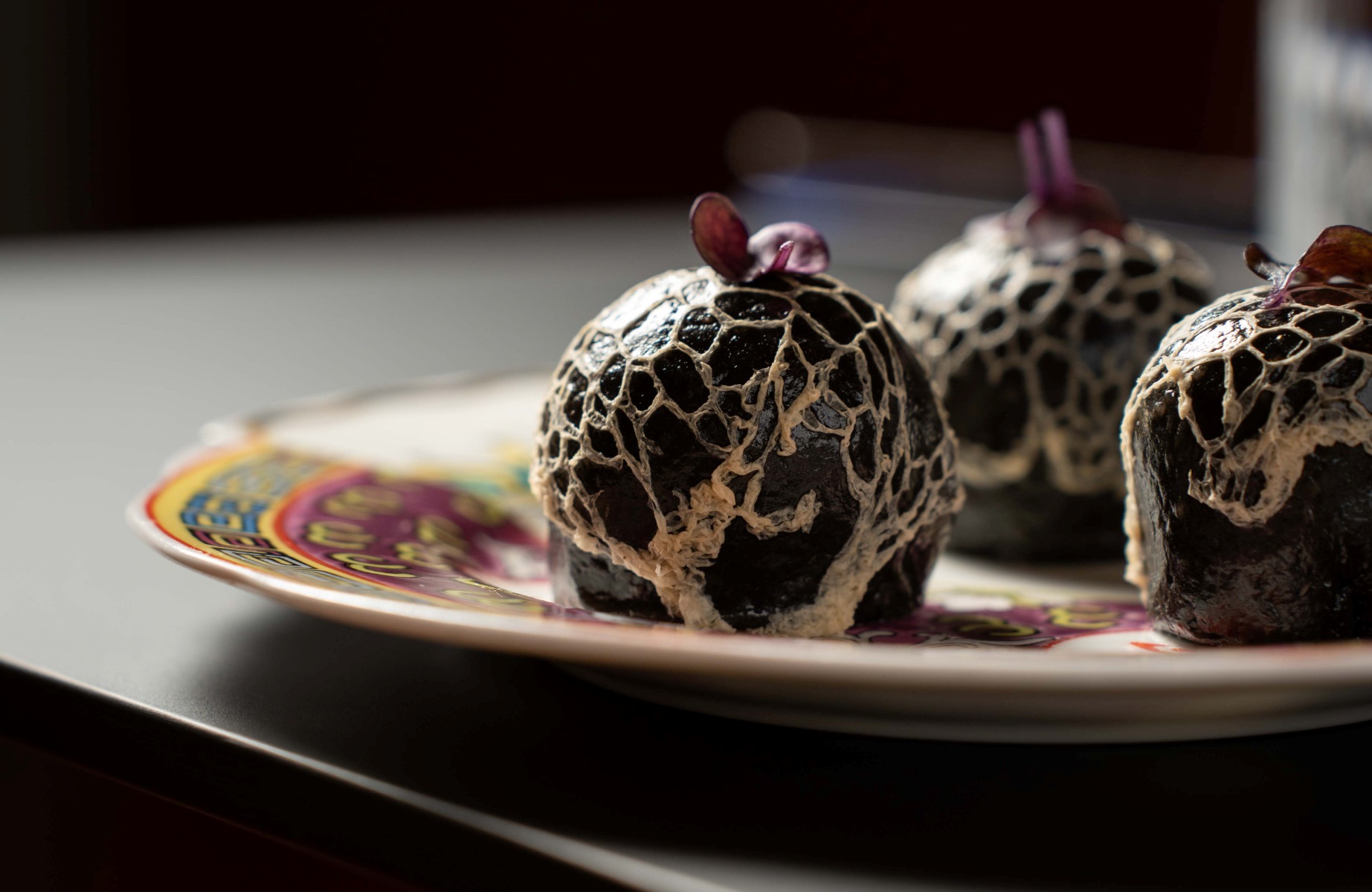
Novoli and San Jacopino: Trendy Corners and Arty Restaurants
Head northwest from the city center to explore the Novoli and San Jacopino areas, which have undergone a recent revitalization, bringing trendy cafés and fusion restaurants and making it a popular spot for young locals and those seeking a fresh take on Florentine dining. Expect contemporary architecture, art-splashed streets and a dynamic mix of cultures. Spots to have on your list include Il Gusto di Xinge, where the chef reimagines Chinese cuisine like dim sum, giving it an elevated twist. One place you don’t want to miss is Manifattura Tabacchi, a tobacco factory turned cultural and creative space. It now hosts art galleries, cafés and frequent events for a wide-ranging crowd.
Campo di Marte: Kick Back With Football (Soccer), Flavors and Fun
Located in Quartiere 2, northeast of Florence, Campo di Marte is best known for its sporty culture and a casual and lively atmosphere. At its heart stands the Artemio Franchi Stadium, home to local soccer team ACF Fiorentina, while the nearby Nelson Mandela Forum hosts events ranging from basketball and volleyball games to concerts featuring top Italian and international talent.
Well connected to the city center by buses and a train station with frequent service, the neighborhood also boasts a diverse dining scene, from casual trattorias to refined restaurants. A must-visit is ice cream parlor Gelateria Badiani, a local institution since 1932. It’s famous for its award-winning Buontalenti flavor, a creamy concoction made with high-quality milk, cream, sugar and eggs, created in the late 1960s to honor renowned Florentine architect — and purported inventor of gelato — Bernardo Buontalenti. There’s no better day to head over here than on match days for a true taste of local atmosphere.
Piazza Ferrucci and Quartiere 3: Riverside Serenity Meets Neighborhood Soul
On the southern bank of the Arno River, Piazza Ferrucci is a serene retreat from Florence’s busy center. It’s also the perfect starting point for a scenic stroll along the river or a climb up to Piazzale Michelangelo via Viale Michelangelo, which curves gracefully along the hillside like a ribbon of stone and shade.
The stunning walk — flanked by towering plane trees whose leaves whisper in the wind, casting dappled light onto the wide, elegant promenade, where joggers, lovers and cars pass beneath the canopy, as the scent of pine, exhaust and sun-warmed earth mingle in the air — all leads toward the grand reveal of Florence waiting below.
Ferrucci, down below at the bottom of the viale, sits near Gavinana, a lively residential neighborhood where locals like to shop at small family-owned botteghe, stopping for coffee and pastries at Pasticceria Cosi or Marcellos on Viale Europa. Go a little further and you’ll find a large park, Aconella, that comes alive in the summer months with kiosks and events.
A standout stop in Ferrucci itself is Ditta Artigianale, a café locals love for its artisanal coffee and easygoing brunch options, while just around the corner, Bottega di Pasticceria tempts visitors with its elegant counter of irresistible local sweet temptations.

Fiesole: Ancient Ruins and Modern Feasts
Fiesole is a hilltop village perched above the main city, with sweeping panoramas, plenty of ancient history and great food. With origins dating back to the Etruscan era, its archaeological sites, such as a well-preserved Roman theater, provide a fascinating glimpse into ancient civilizations. It’s quiet up here, the air scented with cypress trees rustling softly in the breeze. When it comes to where to eat, the standout is Serrae Villa Fiesole, a MICHELIN-Starred restaurant inside a historic Medici villa. Under the guidance of Chef Antonello Sardi, the kitchen crafts innovative dishes like double raviolo pasta stuffed with beef and smoked provola cheese, paired with broccoli, Romanesco cabbage and marinated tapioca — all served with a side of big views over Florence.
Le Cure: A Taste of Timeless Florence, Off the Tourist Trail
Step beyond the tourist-packed center of Florence, past Piazza della Libertà, to Le Cure, a neighborhood with a character all its own. At its heart flows the Mugnone river, once a lifeline for the community: It was here that the local washerwomen, known as le curandaie or le cure, carried out their work.
Centered around Piazza delle Cure, the area has a welcoming, down-to-earth atmosphere where generations of locals gather, especially in the morning when the market comes to life. Small family-run shops line the streets, offering everything from fresh produce to artisanal goods, while the tempting aroma of lampredotto drifts from a beloved food truck in the square.
Le Cure also serves as a gateway to Fiesole and the Florentine countryside, meaning that if you want to slip away for a break from the city, it’s easy. A visit here offers a genuine slice of Florence — where daily traditions, friendly faces and delicious flavors come together in a way that feels both timeless and distinctly local.
Related Articles:
Hero Image: © Sonja Bajic








